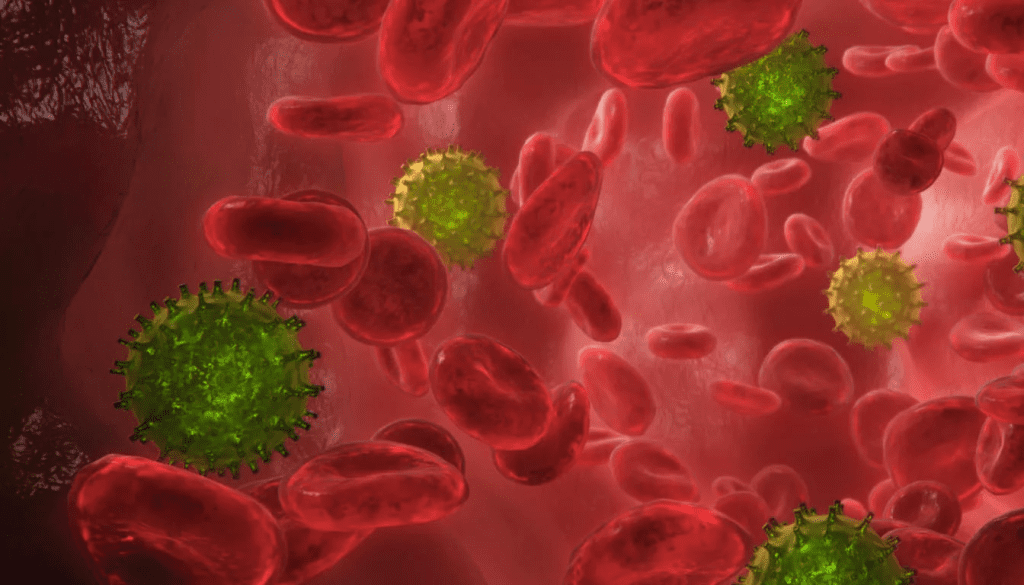Last Updated on October 20, 2025 by

It’s important for patients to understand the signs that immunotherapy is working. Doctors track both how patients feel and their lab results to determine if the treatment is effective. At our institution, we are dedicated to providing top-notch healthcare and supporting patients from around the world. Immunotherapy has transformed cancer treatment, offering new hope and better outcomes for many.
To see if immunotherapy is working, we watch both clinical and lab results. This helps us understand if it’s helping each patient.
Immunotherapy is a new way to fight cancer. It uses the body’s immune system to target cancer cells. This method is more precise than old treatments.
Studies have shown that immunotherapy can be very effective. It gives hope to many patients. Knowing how it works and its types helps us see its value in cancer treatment.
Immunotherapy boosts the immune system to fight cancer better. It helps the body find and destroy cancer cells more easily.
The immune system has ways to fight cancer, like checkpoint inhibitors. These let the immune system attack cancer cells harder. This method has shown great promise in treating different cancers.
There are many types of immunotherapy for cancer. Each works in its own way. These include:
Knowing these types is key to finding the right treatment for each patient. By using these strategies, we can offer more tailored and effective treatments.
We watch for several key signs to see if immunotherapy is working. These signs show how well the treatment is doing. They also help us make changes to the treatment plan if needed.
Tumor shrinkage is a big sign that immunotherapy is effective. It happens when the immune system attacks and kills cancer cells. This leads to a smaller tumor.
Research shows that many patients see their tumors shrink. For example, in some cancers, 20“50% of patients see a measurable shrinkage. This is a good sign that the treatment is working.

Another good sign is when the disease doesn’t get worse. This means the treatment is controlling the cancer, even if it’s not shrinking right away.
Stabilization is important because it shows the treatment is keeping the disease from getting worse. This can greatly improve a patient’s quality of life.
Immunotherapy’s success rates are key to knowing how well it works against cancer. As we learn more about cancer, knowing these rates is important for patients and doctors.

Overall response rates (ORR) show how well immunotherapy works. ORR is the number of patients whose tumors shrink or go away after treatment. Different cancers have different success rates.
For example, immune checkpoint inhibitors have helped non-small cell lung cancer patients live up to 5 years. In some cases, like extensive-stage small cell lung cancer, ORR is as high as 88.9%.
It’s important to know the difference between a complete and a partial response. A complete response means the cancer is gone. A partial response means the tumor has shrunk a lot, but is not gone.
These criteria help doctors see how well immunotherapy is working. They help decide the best treatment for patients. By looking at overall response rates and response criteria, doctors can make better choices for patient care.
We are dedicated to using the latest treatments and teamwork in cancer care. We want to make sure our patients get the best care available.
Immunotherapy has changed how we treat cancer, with drugs like pembrolizumab leading the way. It’s important to look at how well these drugs work. This helps us understand their full promise.
Pembrolizumab, known as Keytruda, is a key treatment for many cancers, including lung cancer. We measure its success by how long patients live and how long their cancer doesn’t get worse.
Nivolumab is another important checkpoint inhibitor used in many cancers. Like pembrolizumab, it focuses on how long patients live and how well they respond to treatment.
Nivolumab’s success is shown in:
Knowing these markers helps doctors see how well pembrolizumab and nivolumab work. As we learn more, we might find even better ways to use these treatments.
Healthcare professionals use specific tests to see if immunotherapy is working. These tests give us important information on how well the treatment is doing. This helps us make changes to the treatment plan if needed.
Tumor markers are substances found in the blood, urine, or tissues of some cancer patients. They are made by cancer or in response to it. We watch these markers to see if the immunotherapy is effective.
A drop or stable level of tumor markers means the treatment is working well.
Immunotherapy’s success can be seen through immune system tests. These include the count of certain immune cells and the presence of proteins. An increase in these signs shows the treatment is working.
By keeping an eye on these signs, we understand how the treatment is going. This helps us make smart choices for future care.
Seeing better physical health, more energy, and stable or lower tumor markers are good signs. Our advanced tests help us track these signs closely. This gives us valuable insights into how well the treatment is working.
When immunotherapy works, patients feel better physically. This can be shown in many ways, which is key in cancer treatment.
One big sign is when cancer symptoms get better. Patients might feel less pain, eat more, and have more energy. For example, someone with lung cancer might breathe easier as the tumor gets smaller.
These changes are real and not just in the patient’s mind. Tests like CT scans can show tumors shrinking. This matches what the patient is feeling better.
Feeling more energetic and able to do daily tasks is another sign. Patients often say they have more energy and can do things without getting too tired.
Doctors use performance status to see how well patients can do everyday things. If this score goes up, it means the patient is doing better. This shows that the immunotherapy is working well.
Every patient’s experience with immunotherapy is different. While these signs are good, they’re part of a bigger picture. Lab results and doctor checks also play a big role. Together, they show how well immunotherapy is helping a patient’s health.
Patients need to know how immunotherapy and chemotherapy work. Both aim to fight cancer, but in different ways. This means they show success in different ways, too.
Immunotherapy boosts the body’s immune system to fight cancer. Chemotherapy, on the other hand, directly kills cancer cells. This leads to different signs of success for each treatment.
Immunotherapy might take longer to show results. Its success is often seen when tumors first grow or new ones appear, then shrink. Chemotherapy, by contrast, shows success when tumors immediately start to shrink.
Because of these differences, doctors need to monitor and manage patients in unique ways.
When chemotherapy works, patients often feel better. They might have less pain, fatigue, and trouble breathing. Signs that chemotherapy is working include:
These signs show that chemotherapy is killing cancer cells.
The quality of life during and after treatment is key. Immunotherapy and chemotherapy affect patients differently. Chemotherapy can cause hair loss, nausea, and fatigue. Immunotherapy, on the other hand, can lead to immune-related side effects that are sometimes severe but different.
Doctors need to understand these differences. This helps them provide better care that improves patients’ quality of life.
Immunotherapy response times vary. Some see benefits early, while others take longer. Knowing this helps us adjust treatments and manage side effects. We make sure our patients know what to expect, helping them understand the timeline for response.
Some patients notice improvements in the first three months. These can include better symptoms or smaller tumors. “Early response to immunotherapy can be a positive indicator of treatment efficacy,” say oncologists. We watch patients closely during this time, making changes to treatment plans as needed.
Early signs can differ based on cancer type and treatment. For example, pembrolizumab (Keytruda) might show results in a few months. But, how long Keytruda stays in the system after stopping affects when these signs appear.
Not everyone sees benefits right away. Some may take months to show significant improvements. This delay is common and shows how long it takes for the immune system to fight cancer.
Delayed responses mean patience is key. “The immune system’s response to immunotherapy can be complex, and sometimes it takes time to see the full benefits,” say healthcare professionals. We help manage expectations and keep track of progress, even when results are slow.
Knowing about early and delayed responses helps us tailor treatments. By monitoring progress and adjusting plans, we aim for the best results with immunotherapy.
Immunotherapy can show its power in many ways. It’s important to understand these patterns to make the right treatment choices.
Pseudoprogression is when tumors seem to grow before they actually get smaller or stay the same. This can be confusing for both patients and doctors. But it’s a sign that the immune system is fighting the cancer.
“Pseudoprogression shows how complex the battle between the immune system and cancer is.”It tells us that old ways of measuring how well treatments work might not always be right.”
Hyperprogression is when cancer grows faster than expected. This is a serious issue that needs quick action and possibly a new treatment plan. It’s not common, but it shows we need to watch patients closely during immunotherapy.
Scientists are working hard to find out why hyperprogression happens. They want to find markers that can tell us who might get it. “Knowing what causes hyperprogression is key to finding ways to prevent it,” we believe.
It’s not uncommon for different tumors in the same person to react differently to immunotherapy. For example, one tumor might shrink while another grows. This makes treatment tricky.
As we deal with the complexities of immunotherapy, keeping up with new research is critical. This way, we can give our patients the best care, tackling the unique challenges these treatments bring.
To see how well immunotherapy works, we use top-notch monitoring tools. These tools help us check how well the treatment is doing. We can then change the treatment plan if needed.
Imaging technologies are key in checking if immunotherapy is working. CT scans and MRIs help us see if tumors are getting smaller. They also spot side effects early.
PET scans give us a deeper look at how tumors are working. This helps us understand how well the treatment is working.
Liquid biopsies are a big step forward in tracking treatment success. They look at the DNA in blood to find tumor markers. This way, we can watch how tumors change without needing to take more tissue.
Immune profiling helps us see how well the immune system is fighting cancer. By looking at immune cells in blood or tumors, we learn a lot. Tools like flow cytometry and gene expression profiling help us understand how the immune system and tumor interact.
Using these advanced tools together, we can give each patient care that fits their needs. This way, we can quickly adjust treatments for the best results.
Immunotherapy is a new way to fight cancer, showing great promise. It’s important to know what makes it work well over time.
Durable responses are key to seeing if immunotherapy works. These are long-lasting effects that show the treatment is really helping. They mean immunotherapy might manage or even cure cancer for some people.
Studies show that some immunotherapies, like checkpoint inhibitors, can cause durable responses in many cancers. For example, immunotherapy has helped patients live longer and feel better.
It’s important to know the difference between complete remission and functional cure. Complete remission means no cancer is found. A functional cure means the cancer is controlled, even if some cells are left.
Immunotherapy can lead to both complete remission and functional cure. For example, some with advanced melanoma have seen their cancer disappear. Others have their cancer under control, even if it’s not gone completely.
Several things can tell us if immunotherapy will work well over time. These include the cancer type, how far it has spread, the patient’s health, and certain biomarkers. These biomarkers show how well the immune system will react to the treatment.
Knowing these factors helps doctors figure out who will benefit most from immunotherapy. This way, they can help patients achieve better long-term results.
Figuring out if immunotherapy is working needs a detailed look at many signs and indicators. At our place, we focus on a full check-up. This includes looking at clinical signs, lab results, and what patients say to really see how immunotherapy is doing.
Healthcare folks check things like whether tumors are getting smaller, whether the disease isn’t getting worse, and whether symptoms related to cancer are getting better. This helps them decide if to keep going with the treatment or make changes. It’s key to know what immunotherapy does and how it affects the body.
Our team works hard to give care that covers all of a patient’s health needs. This way, patients get the best treatment they can. By looking at many signs, we get a better picture of how well immunotherapy is working. This helps us make smart choices for our patients’ care.
Signs that immunotherapy is working include tumor shrinkage and stabilization of disease. Improved cancer-related symptoms and increased energy levels are also signs. Laboratory indicators like declining or stable tumor markers suggest a positive response.
Immunotherapy uses the body’s immune system to fight cancer. It includes checkpoint inhibitors, CAR-T cell therapy, and cancer vaccines. These help the immune system recognize and attack cancer cells.
A complete response means all detectable cancer has disappeared. A partial response shows a significant reduction in tumor size or activity. Both are positive outcomes, with a complete response being more desirable.
Keytruda can stay in your system for weeks to months after stopping treatment. The exact duration depends on your health and treatment length.
Common side effects of Keytruda include fatigue, rash, and diarrhea. Side effects can start at any time but often begin within the first few weeks.
Immunotherapy can lead to durable responses and even complete remission in some patients. It can effectively cure cancer. But outcomes vary based on cancer type, patient factors, and immunotherapy type.
Signs that chemotherapy is working include tumor shrinkage and reduced cancer-related symptoms. Improvements in tumor markers and increased energy are also signs. Better overall health can indicate a positive response.
Pseudoprogression is when tumors seem to grow before shrinking in response to immunotherapy. It can be misleading, making it seem like treatment isn’t working when it actually is.
The effectiveness of immunotherapy is monitored through clinical assessments and laboratory tests. Tumor markers and immune system parameters are checked. Advanced techniques like liquid biopsies and immune profiling are also used.
Factors predicting long-term success with immunotherapy include cancer type, patient health, and the specific immunotherapy used. The presence of certain biomarkers is also important. Durable responses and complete remission are significant indicators.
Subscribe to our e-newsletter to stay informed about the latest innovations in the world of health and exclusive offers!